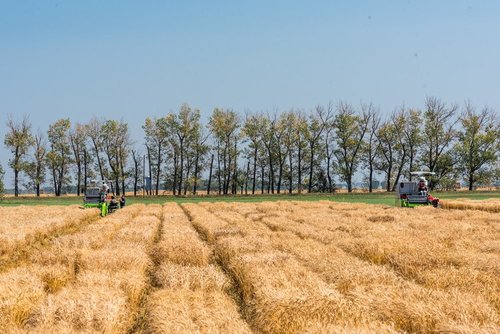Development of Improved Winter Wheat Cultivars for Western Canada

Written by: Ian Doig
In April 2022, Harwinder Sidhu took the reins of the winter wheat breeding program at the Agriculture and Agri-Food Canada (AAFC) Lethbridge Research Centre. For the full year prior, he worked with now-retired head breeder Rob Graf on the transition. Sidhu’s first year with program coincided with the final field season for its winter wheat cultivar development under the most recent five-year Canadian National Wheat Cluster.
Sidhu plans to maintain the program’s track record as a producer of valuable, new CWRW varieties with a focus on improvement to yield and quality as well as pest and disease resistance. “You always want to keep improving your germplasm and your varieties,” he said. “New or evolved pathogens arise that render your previous varieties either susceptible or no longer the best fit. Updated varieties are our best bet to ensure wheat production on the Prairies is robust.”
The program will see two lines move to registration over the next two to three years. The most recently registered line, W614 has been named AAC Overdrive. As its name suggests, the variety exhibits qualities that go above and beyond. “It’s one of the most disease resistant winter wheat varieties to come out of this program,” said Sidhu. “Our goal is that every next line that is supported for registration strives to match its disease resistance profile so farmers can trust that their lines will perform well in the field under high disease pressure.”
While spring wheat breeding can be sped up by contra-seasonal cropping in locations such as New Zealand, this is not possible with winter wheat, which remains dormant in the soil over winter. The program will also work to adopt new genotyping tools and processes to reduce cost and speed up the variety development pipeline that now takes 10 to 12 years. For instance, this will include the use of drone sensor and software technology to conduct field work such as measuring the height of field plots over the course of hours rather than days as is the case when done manually. Such processes speed up the rate at which germplasm with unfavourable traits is discarded, which accelerates development.
Part of its ongoing work, the Lethbridge program has built an extensive germplasm bank to support breeding activities. This allows breeders to target diverse traits that include disease and drought resistance, and its solid-stem germ plasm may aid the fight against wheat stem sawfly.
Sidhu emphasized the AAFC winter wheat program works for farmers. He welcomes their input, which he said shapes the direction of breeding targets. “This is their own program. We produce varieties that work best for them.”
The crop has well-known inherent strengths as a rotational option, but Sidhu emphasized continuous variety improvement will ensure this remains the case. “We will continue developing varieties that increase the confidence of farmers in growing winter wheat and also providing them options for different market classes. We will keep targeting our key areas of yield improvement, resistance and quality, but also foray into new tool exploration and development and see how we can improve winter wheat breeding even further.”